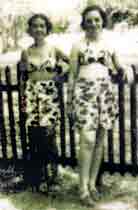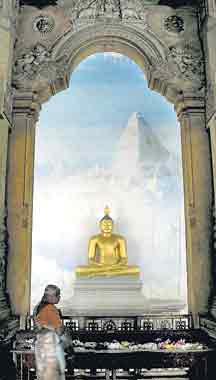
Who was Karl Kasmann?An intriguing story of cold war politics in post-independent Ceylon The memoirs of my boyhood friend Dr. Roger Rodrigue, now in Australia, sparked my memories of the exotic Estonian Karl Kasmann, two decades on from the late 1930s. In hindsight, I realise that my youthful self had, unwittingly, been a not-very-perceptive observer on the sidelines of a great spy story of the Cold War, played out in Colonial and newly independent Ceylon. Beginning In that twilight between the two World Wars Colonial Ceylon was pretty hospitable to Europeans who were free to settle down here, if they so desired. Among them, in the early 1930s, was Karl Kasmann from the Baltic state of Estonia, bordering Soviet Russia.
What yarn he spun to the Colonial authorities, to explain his desire to settle down in this corner of the British Empire, remains a mystery for ever – unless a diligent scholar is now inspired to dig into Colonial archives in London. Kasmann settled down in idyllic Kandy. He was a gifted artist whose reputation as a portrait painter gradually spread in the mansions and walauvas of the hill country. He sealed his acceptance into the hospitable (to Europeans!) Burgher community when he married Doris Karlenberg, a well-known teacher of piano music. He also had an edgy relationship with Kandy’s other artist George Keyt. I recall tagging along to the Kasmann home with my friends Bruno and Roger Rodrigue whose mother, another Doris, was my teacher in Dharmaraja. Karl was a broadly built man, though not particularly tall. The Kasmanns lived in a tall grey house up a flight of steps on a road rising steeply from Peradeniya Road in Katukelle. While the adults chatted, my two friends and I quietly rummaged among the stacked canvases looking for the holy grail of a nude portrait. Seizure of the "Kallarand” The clouds of war were ominously gathering in Europe. In 1938 Soviet Russia launched a pre-emptive strike and marched into little Estonia "incorporating" it into the USSR. A duly "loyalist" government proceeded to nationalise all British assets in the country. The British, impatient but unable to strike a counter blow, were handed a bonanza when the Estonian cargo ship "Kallarand" sailed into Colombo harbour. The British authorities promptly impounded the ship as retaliation against the Estonian Soviet Republic’s nationalisation of British assets. Initially, the crew were interned aboard their ship. Later they were allocated a bungalow in Kandy. These sailors knew no English. Fortunately for them Karl Kasmann, the only resident Estonian in Ceylon, became their ‘Interpreter Mudaliyar’. When war finally broke out in Europe and Estonia became a war zone, these sailors found themselves lounging in the ‘land of Lotus eaters’. Roger’s memoirs describe the "hardships" these mariners underwent. “The sailors at the ‘Kallarand’ had arranged parties to which our families were invited. Initially these were on board their ship and later at the house provided them by the Ceylon Government, and we had a wonderful time together. They visited Kandy and stayed with us.” I have a hazy memory of these occasions and burly, English-challenged sailors belting out strange songs. These men must have "suffered" the most glorious internment in the history of that punishment! They were at last, repatriated back home as post-war Russia was, now, an ally of Britain. I can imagine their sorrow in leaving these palm-fringed shores and moonlit picnics for the grey and icy Baltic coast and dreary austerity of Soviet Estonia.But Karl Kasmann stayed back, now a citizen of the Estonian Soviet Republic. Post war Colombo
The war had changed Colombo for ever. The flood of foreign servicemen had changed the once-staid little town into an exciting place with night clubs, cafes and cabarets aplenty. More upmarket society became aware of the latest films and books. Art and artists had a ready market, especially after the ’43 Group exhibition. Soviet films and books began to appear and there flourished, briefly, that fellow-travellers’ haven of the Friends of the Soviet Union – which began when Russia was catapulted into the Great Patriotic War and, thus, into alliance with the Brits and Yanks. Many pro Indian Independence individuals and groups gravitated in this direction. Independence dawned. Kasmann now seems to have left Kandy, and his Doris to her piano. In the early 1950s he held a joint exhibition at the Art Gallery with George Keyt. I recall visiting this exhibition as an undergraduate and viewing the portraits he specialised in, of bejewelled Kumarihamis and flamboyantly garbed Nilames. Many years later George Keyt, who never had a good word for any other painter, brushed off Kasmann as a parvenu of little talent. Karl’s main talent, said George, lay in seducing the Kumarihamis he painted while sojourning in their walauvas. The lovely Liebovitz Claudine Liebovitz, a statuesque East European (Belgian) blonde now began appearing in Colombo’s elite and highbrow circles. She was photographed with Ceylon’s movers and shakers, pleased as Punch to be hob-nobbing with this blonde bombshell. But she was far from dumb. Claudine was thoroughly well informed about artistic and political developments the world over and spoke with wit and charm. Kasmann and she became "an item" in Colombo’s social whirl. But Colombo was no longer a back-water in world politics. The Cold War was hotting up. Anti-Communism was flourishing in the USA. Uncle Joe Stalin and his minions were no longer noble allies but vicious saboteurs of the American Way of Life. This message of the American Ambassador fell like manna into the ears of the unashamedly right-wing UNP government of that time that fought elections on the slogan "Save Buddhism from the Flames of Marxism". The jodhpur wearing John Kotelawela was Prime Minister. He saw an opportunity to rid his country of Commie foreigners who were corrupting our local Reds and score brownie points with Uncle Sam. Topping this list were the American Rhoda Miller, the Belgian Claudine Liebovitz and Karl Kasmann. Rhoda was deported. It is now clear that the KGB must have ‘extracted’ Claudine – though nobody knows how. When our Thompsons & Thomsons arrived at her doorstep – the bird had flown! Karl’s caper Flying out via Immigration at Ratmalana Airport would have been impossible for Karl, but his handlers had it all worked out. A. Azeez, founder of the Democratic Workers’ Congress (D.W.C.) was a close friend of Karl and colleague in his "progressive" Left activities. As a Pakistani from the Punjab he was as fair and burly as an European. He loyally went along with the KGB plan and bought himself an air-ticket to Rome. He then briefly disappeared from the scene. Karl Kasmann then coolly produced Azeez’s passport and was waved through Immigration (well sweetened, probably) and left Ceylon forever. The Opel car My father’s friend M.T. Jaimon, reputed journalist and Editor of "The Times of Ceylon" was a frequent visitor at home where both gentlemen talked late into the night on matters cultural. The car he drove intrigued me. It was a compact pre-war Opel Kadet. I asked him how he had managed to lay his hands on this rare model. "This was Karl Kasmann’s car. I knew him from the time when we lived in Kandy. I moved with his crowd of ‘progressives’ in Colombo. One night he drove up to my home in this car, and gave me the keys. ‘Keep this car to remind you of the good times we had, old friend. We will never meet again in Ceylon. Good Bye!’ Days later I heard of his Great Escape.” |
|
||||||
|| Front
Page | News | Editorial | Columns | Sports | Plus | Financial
Times | International | Mirror | TV
Times | Funday
Times || |
| |
Reproduction of articles permitted when used without any alterations to contents and a link to the source page.
|
© Copyright
2008 | Wijeya
Newspapers Ltd.Colombo. Sri Lanka. All Rights Reserved. |

